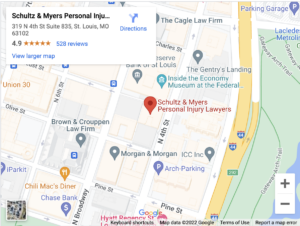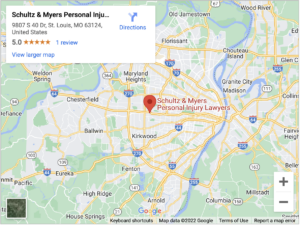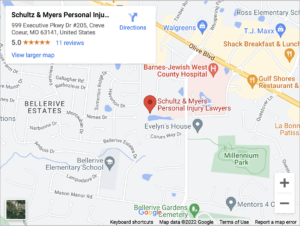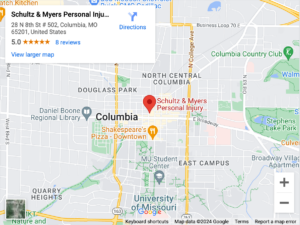
The term “whiplash” gets thrown around a lot. When you suffer a sore neck after a car accident, you or your doctor might blame whiplash.
But whiplash can cover more than a sore neck. This injury can damage nerves, producing symptoms throughout your body. It can even cause permanent disabilities due to spine instability.
What Is the Structure of Your Spine?

You have 24 individual vertebrae that connect to form your spine. Your segmented spine can curve and twist in a way that a rigid bone cannot. This gives your body a wide range of motion that allows you to bend and turn.
The top seven vertebrae sit in your neck and form your cervical spine. These vertebrae support your head and protect the section of your spinal cord that controls your chest muscles and upper limbs. A spinal cord injury in the cervical spine can kill you or paralyze all four of your limbs.
The next 12 vertebrae in your back attach to your ribs and form your thoracic spine. The thoracic spine helps your ribs protect your vital organs. The bottom seven vertebrae in your lower back form the lumbar spine. These vertebrae transfer your body weight from your spine to your hips and legs so you can walk.
A cushion formed from collagen sits between each pair of vertebrae. These discs include a soft nucleus that sits inside a tough annulus. Like the cartilage lining your joints, the discs prevent the vertebrae from grinding against each other as you move.
Each vertebra includes a cylindrical body that transfers your weight up and down your spine. Wing-shaped processes attach to the body. Together, they form the spinous process that forms the bumps running up the center of your back. The spinous process gives ligaments and tendons in your back a place to attach to your spine.
The spinal cord runs through the spinal canal. This passageway in your spine sits between the vertebral bodies and the spinous process. The spinal canal protects your spinal cord from minor impacts.
What Can Cause a Whiplash Injury?
A whiplash injury happens when the cervical spine hyperextends.
This can happen in almost any accident involving rapid acceleration or deceleration, including:
- Traffic accidents
- Elevated falls
- Slip and fall accidents
- Amusement park ride accidents
- Assaults
In these accidents, your head whips back and forth, pulling on your neck. The forces involved in this motion might not seem significant. But bear in mind that your head could travel dozens of miles per hour during your collision, and your head weighs about eleven pounds.
To get an idea of the force your neck experiences during a crash at highway speeds, imagine the force you would need to stop a bowling ball traveling at 50 miles per hour.
As your head pulls your neck, it pulls the cervical vertebrae apart. This hyperextension causes the ligaments, tendons, and muscles in your back to stretch or tear. As your head swings in the opposite direction, the vertebrae compress, crushing the discs and potentially deforming them. The injuries you suffer as a result of these stresses constitute whiplash injuries.
What Types of Whiplash Injuries Can Occur?
Whiplash injuries primarily affect the neck and back. But the severity of these injuries depends on the structures that get hurt. Some examples of whiplash injuries include:
Neck Strain
You have several muscles in your neck that support and move your head. These muscles attach to the spine, skull, collarbones, and shoulder blades through tendons.
Neck strain happens when these tendons and muscles hyperextend. In a mild strain, the muscles and tendons suffer damage when they get stretched. In severe cases, they stretch so far that they develop tears.
Symptoms of neck strain include:
- Muscle pain
- Swelling
- Weakness
- Stiff neck
- Muscle spasms
Neck strains usually heal with home care in four to six weeks. Your doctor will probably prescribe rest, ice packs, and anti-inflammatory medication.
Sprained Neck
Ligaments hold muscles together at joints. In your spine, ligaments hold vertebrae in place. A sprained neck happens when a whipping motion hyperextends these ligaments. As they stretch, the ligaments suffer damage and may tear.
Symptoms of a sprained neck include:
- Neck pain
- Inflammation
- Bruises
- Neck instability
- Limited range of head motion
Neck sprains rarely require surgery and instead require rest. You may need a neck brace to support your head and physical therapy to strengthen your neck after your ligaments heal.
Herniated or Bulging Discs
As your vertebrae compress during whiplash, they can crush your discs. The crushed discs can deform by herniating or bulging. A herniated disc happens when the nucleus pushes through the fibers of the annulus and creates a bump on the side of your disc.
A bulging disc happens when the annulus remains intact but sags. As a result, the sides of the disc bulge outward into a pancake shape.
Damaged discs cause local pain in your neck or back and can also make your back weak and unstable. But a damaged disc can cause much worse symptoms if the bulge or herniation presses on a nerve root near your spine.
Nerve compression from a deformed disc can cause:
- Pain that radiates into your limbs
- Numbness
- Tingling
- Burning sensations
- Loss of dexterity
- Weakness in your extremities
Damaged discs do not heal. You must either work with your doctor to manage the symptoms or undergo risky spine surgery to replace or remove the damaged disc.
How Can You Get Compensation for a Whiplash Injury?
When you suffer a whiplash injury due to someone else’s actions, you can pursue a personal injury claim. The compensation you can seek in your claim can include economic damages, such as medical bills and lost income, and non-economic damages, such as pain, suffering, and disability.Whiplash can temporarily disable you and trigger long-term problems like herniated discs. To discuss the compensation you can seek for a whiplash injury caused by someone else’s actions, contact our law firm Schultz & Myers Personal Injury Lawyers for a free consultation at (314) 444-4444.





